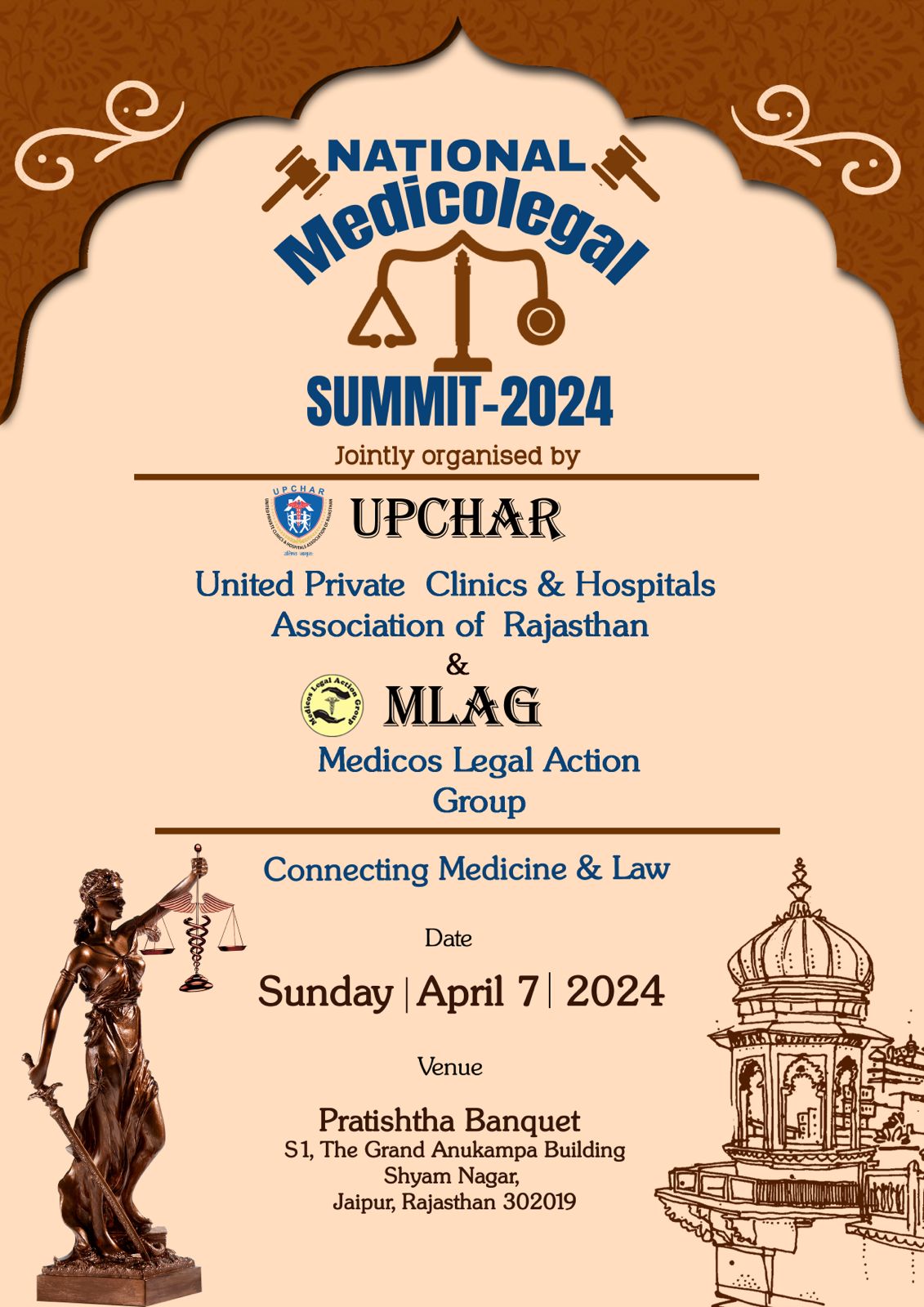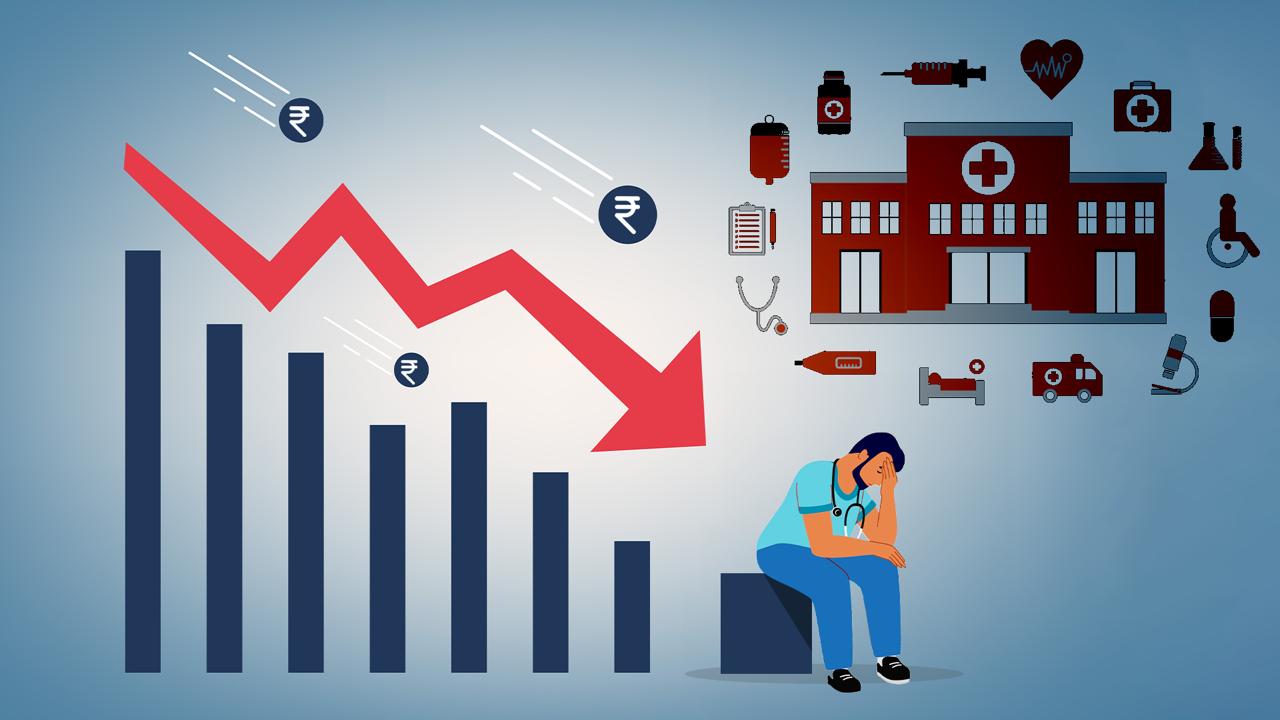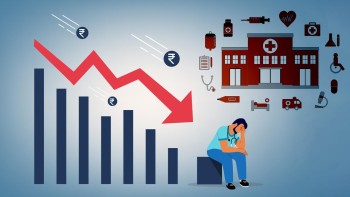Navigating the Crossroads: Balancing Business Models and Patient-Centricity in Indian Healthcare
-Dr Niranjan Shah MD, DNB (Ob & GY)
- Dr Raj Shekhar Yadav MBBS,MD (Medicine)
India's healthcare system stands at a critical juncture, grappling with the tension between profit-driven models and the imperative to deliver patient-centered care. This article delves into the complexities of this landscape, analyzing the current structure, charging patterns, and the role of health insurance, while exploring recent legal developments and their potential implications.
A Multifaceted System with Uneven Access: India's healthcare system is a blend of public and private sectors, resulting in significant regional disparities in accessibility, quality, and affordability. While the private sector dominates, offering diverse platforms like hospitals, clinics, and telemedicine, concerns persist regarding its prioritization of profit over equitable access and quality care.
Unpredictable Costs and Limited Coverage: The current system is plagued by unpredictable charging patterns for medical services, leading to financial burdens and anxieties for patients. Although health insurance plays a role in mitigating costs, limited coverage creates disparities and contributes to a fragmented financing structure.
Charging Pattern for Medical Services
The charging pattern for medical services in India is heterogeneous, with fees varying widely across providers and regions. This variability often leads to financial unpredictability for patients and challenges in cost estimation.

Factors Affecting the Cost of Medical Services
• Location of the hospital: Hospitals in metropolitan or tier-one cities typically have higher service charges compared to those in smaller towns due to differing establishment and operation costs.
• Cost of services within the same city: Similar variations exist within a city due to differences in hospital establishment and operational costs, akin to variations in pricing between three-star and five-star hotels.
• Cost of treatment for patients in the same hospital: This can vary due to:
o Qualification and experience of the treating physician: More experienced or renowned doctors may command higher fees.
o Level of services chosen by the patient: Opting for a private room instead of a general ward incurs higher costs.
• Cost of treatment for patients with the same illness in the same hospital: This can vary due to:
o Quality and price differences of medicines and implants: The cost of implants like lenses used in cataract surgery can significantly vary, ranging from ₹500 to over ₹1 lakh.
• Unforeseen complications during treatment, stage of the patient's illness, presence of comorbidities, level of awareness about the illness, precautions taken during treatment, and patient's compliance with treatment: These factors can all influence the overall cost of treatment even for the same illness.
Recent Legal Developments and Their Impact: The recent landmark Supreme Court case on variable charging patterns in healthcare underscores growing concerns about arbitrary pricing practices. This case highlights the need for regulatory intervention to ensure transparency, fairness, and standardized hospital charges across the nation, potentially leading to significant shifts in healthcare governance.
Legal Ambiguity:
• The absence of clear legislation governing medical service charges leaves room for interpretation and exploitation by healthcare providers.
• Legal challenges arise from the lack of uniformity in fee structures across different states and healthcare facilities.
• The regulatory framework fails to address the nuanced dynamics of healthcare pricing, leading to disputes and litigation between providers, insurers, and patients.
Balancing Interests: A Delicate Equation: However, regulating medical fees necessitates a delicate balancing act. While regulations can enhance affordability and equity for patients, concerns remain regarding the potential impact on the medical profession. Capping fees might constrain their autonomy and hinder investment in innovation, raising concerns about the long-term sustainability and quality of care.
Examples and Statutory Laws: The complexities of healthcare regulation in India are evident in the following examples and statutory laws:
• Business Model vs. Service-Centric Approach: The proliferation of corporate hospital chains in urban areas often focuses on profitability, leading to concerns about overutilization of medical services and inflated billing practices. The Clinical Establishments (Registration and Regulation) Act, 2010, aims to regulate the establishment and operation of all clinical establishments in India, emphasizing standards of care and patient safety.
• Health Insurance and Its Coverage in India: The Pradhan Mantri Jan Arogya Yojana (PMJAY), also known as Ayushman Bharat, is a government-sponsored health insurance scheme aimed at providing coverage to vulnerable populations for secondary and tertiary care hospitalizations. The Insurance Regulatory and Development Authority of India (IRDAI) regulates health insurance in India through various guidelines and regulations to ensure consumer protection and fair practices by insurers.
• Supreme Court Case on Variable Charging Pattern of Fees in India: In the case of Paramanand Katara v. Union of India (1989), the Supreme Court emphasized the right to emergency medical treatment regardless of the patient's ability to pay, setting a precedent for equitable access to healthcare services. The Consumer Protection Act, 2019, empowers consumers to seek redressal for unfair trade practices, including overcharging for medical services, through consumer forums.
• Notice to Indian Government to Address the Issue: The recent notice by the Supreme Court to the Indian government regarding standardizing hospital charges across states underscores the judiciary's role in addressing systemic issues of healthcare affordability and accessibility. Article 21 of the Indian Constitution guarantees the right to life and personal liberty, interpreted by the judiciary to include access to healthcare as a fundamental right.
• Impact of Government or Supreme Court Interference: The implementation of price caps on essential medical devices under the Drug Price Control Order (DPCO) has led to debates about its effectiveness in balancing affordability and innovation in healthcare. The Medical Council of India Act, 1956 (now replaced by the National Medical Commission Act, 2019) provides for the regulation and maintenance of standards in medical education and practice, including ethical considerations in fee charging by medical practitioners.
These examples and statutory laws illustrate the multifaceted nature of healthcare regulation in India and its implications for stakeholders across the healthcare ecosystem.
Differing Views:
Viewpoints from the Medical Profession:
• Medical professionals often argue that fee regulation undermines their autonomy and hampers innovation in healthcare delivery.
• They contend that capping medical service charges may deter investment in advanced technology and infrastructure, ultimately compromising the quality of care.
• Additionally, some physicians express concerns about the financial sustainability of small clinics and independent practitioners if forced to adhere to standardized fee structures.
Viewpoints from Patients:
• Patients advocate for transparent pricing and affordability, emphasizing the need for protection against exorbitant medical bills.
• Many patients experience financial hardship due to unpredictable healthcare costs, leading to delayed or inadequate treatment.
• From the patient's perspective, standardized charges would enhance trust and confidence in the healthcare system, ensuring fair access to quality care without fear of financial exploitation.
And the Road Ahead:
Addressing the diverse perspectives of stakeholders, including the medical profession, patients, and policymakers, is crucial for navigating the complexities of healthcare regulation in India. Balancing these diverse viewpoints, while acknowledging legal ambiguities and forecasting potential future scenarios, is essential for informed policymaking. By fostering an inclusive dialogue and exploring alternative reimbursement models, policymakers can work towards a more equitable and effective healthcare system that serves the well-being of all Indian citizen












Recent comments
Latest Comments section by users
Guest
Mar 03, 2024
worth good reading